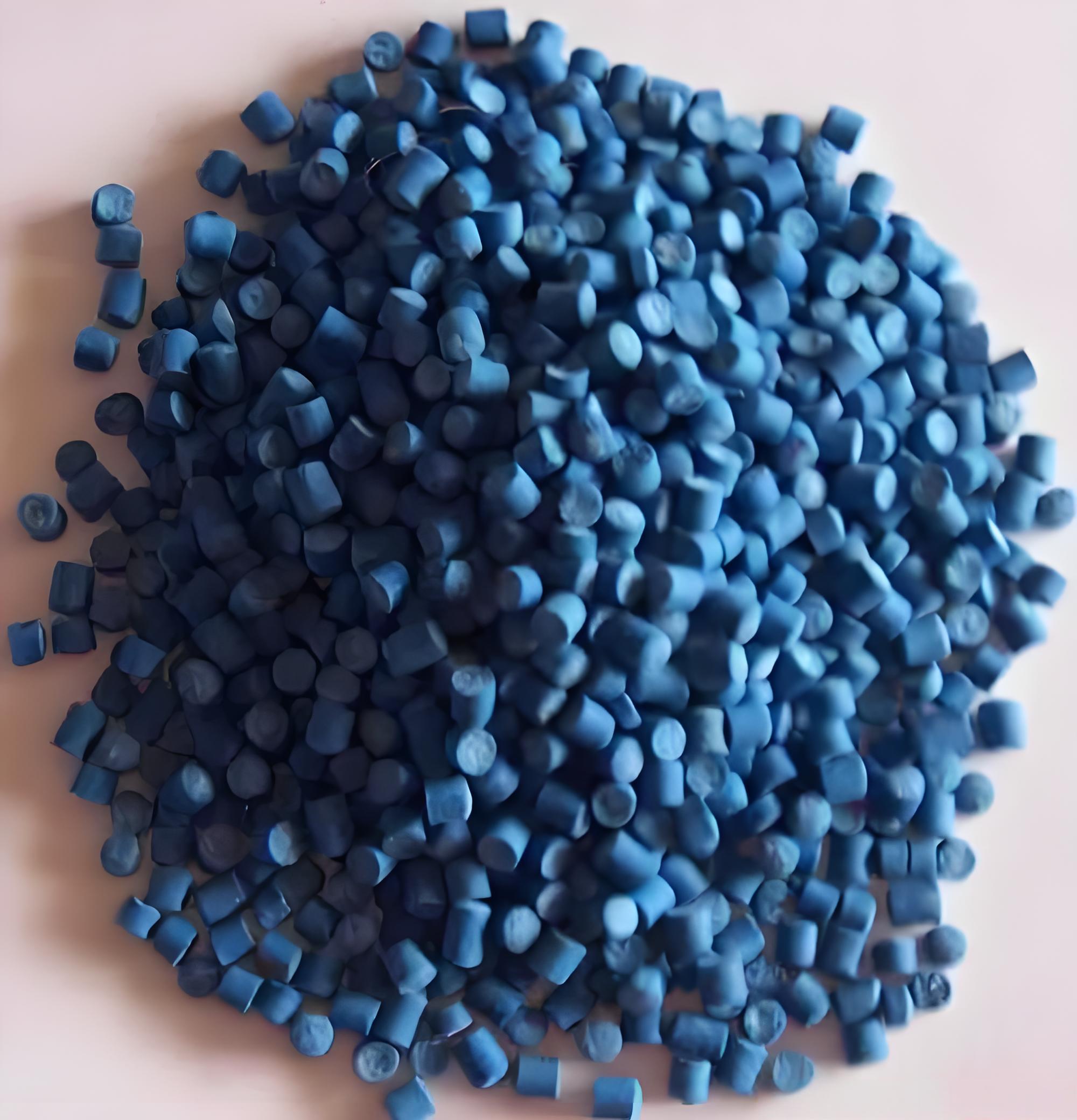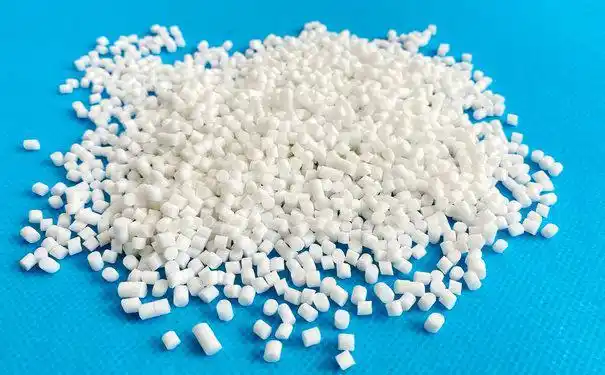As someone who’s spent over a decade working with materials in product design and manufacturing, I’ve had my hands on countless samples, from rigid plastics to pliable rubbers. One material that consistently stands out for its versatility and unique feel is TPE soft rubber. If you’re curious about what TPE (Thermoplastic Elastomer) is like—its texture, properties, and why it’s so widely used—let me take you through my experience with this fascinating material. Whether you’re a designer, a consumer, or just someone intrigued by modern materials, I’ll break it down in a way that’s clear and practical, sharing insights from my years in the industry.

A First Encounter with TPE: What Does It Feel Like?
When I first handled a TPE sample, I was struck by its soft, almost skin-like texture. It’s not as tacky as traditional rubber, nor as hard as plastic. Imagine picking up a phone case or a grip for a kitchen tool—there’s this satisfying balance of flexibility and firmness. TPE has a smooth, slightly velvety feel that’s pleasant to the touch, making it a go-to for products where comfort matters. Depending on the formulation, it can range from squishy and gel-like to slightly springy, but it always feels approachable, like it was made to fit naturally in your hand.
Unlike silicone, which can sometimes feel a bit too slick or sticky, TPE strikes a sweet spot. It’s non-slip, which is why you’ll see it in everything from yoga mats to medical devices. I remember testing a TPE prototype for a wearable fitness tracker strap years ago, and the client loved how it felt secure on the wrist without being restrictive. That’s TPE’s charm—it adapts to the user’s needs.
The Science Behind TPE: Why It Feels So Unique
To understand why TPE feels the way it does, let’s dive into what it’s made of. As a thermoplastic elastomer, TPE combines the elasticity of rubber with the processability of plastic. This means it can be molded and shaped when heated but behaves like a stretchy, flexible rubber once cooled. In my work, I’ve seen TPE formulated in countless ways, each tweak changing its hardness, elasticity, or durability.
Here’s a quick breakdown of TPE’s key characteristics:
|
Property |
Description |
Common Applications |
Why It Matters |
|---|---|---|---|
|
Softness |
Ranges from ultra-soft (like gel) to semi-firm, measured in Shore A hardness. |
Phone cases, grips, medical tubing |
Enhances comfort and user experience. |
|
Elasticity |
Stretches and returns to shape without permanent deformation. |
Wearable straps, seals, toys |
Ensures durability and flexibility. |
|
Surface Texture |
Smooth, slightly matte, or grippy, depending on additives. |
Handles, footwear soles, mats |
Provides slip resistance and tactile appeal. |
|
Recyclability |
Can be melted and reprocessed, unlike traditional rubbers. |
Sustainable product designs |
Eco-friendly for modern manufacturing. |
This table reflects what I’ve learned from testing TPE in various projects. For example, in one project, we used a Shore A 30 TPE for a soft-touch grip on a power tool. It was firm enough to hold its shape but cushioned enough to reduce hand fatigue during long use. The ability to fine-tune TPE’s properties is what makes it so special.

Why TPE Stands Out in Real-World Use
In my career, I’ve worked with manufacturers who swear by TPE for its versatility. It’s not just about how it feels—it’s about how it performs. Here are a few reasons why TPE has become a staple in industries ranging from consumer goods to healthcare:
1. Comfort and Ergonomics
I’ve designed products like toothbrush handles and earphone tips where user comfort was non-negotiable. TPE’s ability to mold to shapes and provide a soft, cushioned feel makes it ideal for anything that touches the body. For instance, I once collaborated on a medical device where TPE was used for a flexible, skin-friendly catheter. Patients reported it felt less intrusive than silicone alternatives, which was a big win.
2. Durability Without Sacrificing Flexibility
One of my favorite TPE projects was a set of reusable kitchen storage bags. The material needed to be flexible enough to fold but durable enough to withstand repeated use. TPE delivered. Unlike traditional rubbers that crack over time, TPE’s elastic memory ensures it bounces back, even after heavy stretching or compression.
3. Customizable Aesthetics
TPE can be colored, textured, or even made translucent, which I’ve seen used to great effect in consumer products. I once worked on a line of kids’ toys where we used vibrant, translucent TPE to create squishy, glowing figures. The material’s ability to take on dyes and finishes without losing its core properties was a game-changer.
4. Eco-Friendly Potential
As sustainability became a bigger focus in my industry, I noticed TPE gaining traction because it’s recyclable. Unlike thermoset rubbers, which can’t be remelted, TPE can be reprocessed, reducing waste. I’ve worked with brands that proudly market their TPE products as green alternatives, which resonates with today’s eco-conscious consumers.
TPE in Everyday Products: Where You’ve Seen It
You’ve probably encountered TPE without even realizing it. Here are some common places where its unique properties shine:
Phone Cases: The soft, grippy texture of TPE protects your device while feeling great in your hand.
Sports Equipment: From yoga mat surfaces to bike grips, TPE’s non-slip surface enhances safety and comfort.
Medical Devices: TPE’s biocompatibility (in certain grades) makes it perfect for tubing, seals, and wearable monitors.
Toys and Baby Products: Its non-toxic, flexible nature is ideal for teething rings and soft toys.
Footwear: Many shoe soles use TPE for its cushioning and durability, especially in athletic shoes.
I remember a project where we chose TPE for a line of baby bottle nipples. The material’s softness and safety certifications (like FDA compliance for food-grade TPE) gave parents peace of mind, while its elasticity mimicked natural textures, making it a hit with both babies and parents.

Comparing TPE to Other Materials
To give you a clearer picture, let’s compare TPE to its closest cousins: silicone and traditional rubber. I’ve worked with all three, and each has its place, but TPE often comes out on top for specific reasons.
|
Material |
Texture |
Processing |
Cost |
Best For |
|---|---|---|---|---|
|
TPE |
Soft, smooth, grippy |
Easy to mold, recyclable |
Moderate |
Versatile, user-friendly products |
|
Silicone |
Slick or sticky, less grippy |
Complex curing process |
Higher |
High-heat or medical applications |
|
Rubber |
Firm, can be tacky |
Non-recyclable, labor-intensive |
Varies |
Heavy-duty industrial uses |
In my experience, TPE is often chosen over silicone for cost-effectiveness and ease of manufacturing. For example, a client once switched from silicone to TPE for a line of kitchen utensils because TPE was easier to mold into complex shapes and didn’t require the expensive curing process silicone demands. The result? A product that felt just as premium but cost 20% less to produce.
Challenges and Limitations of TPE
No material is perfect, and TPE has its quirks. I’ve run into a few challenges over the years:
Heat Sensitivity: TPE softens at high temperatures, so it’s not ideal for applications like cookware that face extreme heat. I learned this the hard way when a prototype TPE handle warped during a dishwasher test.
UV Resistance: Some TPE grades degrade under prolonged sunlight exposure. For outdoor products, I always recommend UV-stabilized TPE to avoid cracking.
Not All Grades Are Equal: TPE’s properties vary widely based on its formulation. I’ve seen cheap TPE that felt flimsy and tore easily, so working with a trusted supplier is critical.
Despite these limitations, I’ve found that choosing the right TPE grade—whether it’s food-safe, medical-grade, or UV-resistant—solves most issues. It’s all about matching the material to the application.
My Tips for Working with TPE
If you’re considering TPE for a project or just curious about using it, here are some practical tips based on my experience:
Know Your Hardness Needs: TPE’s Shore A scale ranges from 0 (super soft) to 90 (almost rigid). I always test multiple hardness levels to find the sweet spot for comfort and functionality.
Check Certifications: For products like baby toys or medical devices, ensure the TPE is FDA-compliant or biocompatible. I once had to redo a batch because the supplier sent non-certified material—don’t skip this step.
Prototype Early: TPE’s feel can vary slightly between batches. I always order small samples to test texture and performance before committing to a full run.
Consider Additives: Want a grippier surface or a specific color? Additives can enhance TPE’s properties, but I recommend working with a materials engineer to avoid compromising durability.
Why TPE Feels Like the Future
After years of working with TPE, I’m still impressed by its ability to balance comfort, durability, and sustainability. It’s a material that feels personal, like it was designed with the user in mind. Whether it’s the soft grip on your favorite pen or the flexible strap on your smartwatch, TPE has a way of making products feel intuitive and reliable. Its recyclability also aligns with the growing demand for eco-friendly materials, which I’ve seen become a priority for both manufacturers and consumers.
In one of my recent projects, we used TPE for a line of eco-conscious yoga accessories. The client wanted a material that felt luxurious but was sustainable. TPE checked every box, and the customer reviews raved about the soft, grippy texture. Moments like that remind me why I love working with this material—it’s not just functional; it elevates the user experience.

Final Thoughts
TPE soft rubber is more than just a material—it’s a solution that bridges comfort, practicality, and innovation. Its unique texture, versatility, and eco-friendly potential make it a favorite in my work, and I suspect you’ll start noticing it everywhere once you know what to look for. From the way it cushions your grip to its ability to withstand daily wear, TPE is a material that quietly makes life better. If you’re exploring materials for a project or just curious about what’s in your hands every day, I hope this deep dive into TPE has shed some light on why it’s so special.
Related Questions and Answers
Q: Is TPE safe for skin contact?
A: Yes, many TPE grades are biocompatible and safe for skin contact, especially those certified for medical or food-grade use. I always check for certifications like FDA or ISO 10993 compliance when working on skin-contact products.
Q: How does TPE compare to silicone in terms of cost?
A: In my experience, TPE is generally more cost-effective than silicone because it’s easier to process and doesn’t require complex curing. However, high-performance TPE grades can approach silicone’s price, so it depends on the application.
Q: Can TPE be used outdoors?
A: It can, but I recommend choosing UV-stabilized TPE to prevent degradation from sunlight. I’ve seen non-stabilized TPE crack after months of exposure, so always specify outdoor use when sourcing.
Q: Is TPE environmentally friendly?
A: TPE is recyclable, which gives it an edge over traditional rubbers. I’ve worked with brands that use recycled TPE blends to reduce waste, making it a solid choice for eco-conscious designs.





